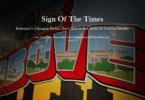The days of carrier pigeons and telegrams are long gone. International conflict, like the rest of the world, is transitioning online. Although technology has always been used to countries’ military advantage, the age of social media has taken that to the next level. The Ukraine-Russia war was the first war fought using social media as a weapon.
At the start of the war, Ukraine’s Deputy Prime Minister Denys Shmyhal described the conflict as a “technology war.” Both sides have used social media sites to share information. Instagram, TikTok, and Facebook were alive with videos—graphic videos of explosions, drones dropping bombs, and armoured vehicles on fire. The Kremlin even went to the extreme of creating fake accounts to spread misinformation. They created a new online fighting division.
Social media has been a successful tool for Ukraine in its push for more funding and international community support. Support Russia acknowledged by banning Instagram in 2022. Professor John Langmore, the Assistant Director of Research (Security and Political Engagement) at the Melbourne School of Government, told me he “understands how unique this war is.”
Professor Langmore said, “Every detail of what is being done and what is happening is reported as it happens. The material for judging the behaviour of each side is uniquely available to everyone in the world. The Vietnam War was considered the first “information war. Its reporting led to mass protests in Australia and forced Prime Minister Billy McMahon to withdraw our remaining troops.
The Ukraine-Russia conflict has shown the importance of social media in conflicts, and now this is playing out in Gaza. Professor Langmore believes that Israel has done irreversible damage to itself and the Jewish population around the world. “The Israelis who are most actively engaged in their military actions cannot or do not have any idea of the damage that they are doing to themselves. The whole place of Israel, in the world, will be forever transformed by the horror of this event,” Mr Langmore said.
Currently, it has been reported that 15,000 children have died, and more than 10,000 are missing. It’s all been played out online. Much like Russia, Israel has been getting a lot of negative press. Their official statements do not match what the world has seen online. Social media has brought pressure on Israel and other countries supporting them, like the United States, to call for a ceasefire. The United States’ undying allegiance to Israel has turned the internet against them as well as Israel. “Israelis think they are justified, so they have been able to justify this as a response to Hamas. But even a preschool would know that is nonsense,” Professor Langmore said.
Israel has been exposed in their efforts to prove they have been successful in finding and eliminating Hamas. Their military has posted promotional-style videos showing ‘evidence’ of Hamas or reasons to justify their actions. Fact-checking experts have used tools to debunk a lot of these. One of the most prominent examples was Israel’s claim that Hamas was using a tunnel under the hospital, commonly known as Qatari Hospital. Sanad’s investigative team used open-source intelligence (OSINT) techniques to investigate IsraeIsrael’sms. Open-source intelligence is produced by collecting, evaluating, and analysing publicly available information to answer a specific intelligence question.
Technology’s transformation has given the social media landscape first-hand access to war zones, allowing people to share things as they happen. With OSINT, the Sanad team uncovered bird’ s-eye footage during the hospital’s construction. They then spoke to one of the engineers. Through these two sources, they discovered that the supposed tunnel was nothing more than a water tank.
There are two completely different accounts, but one was debunked due to content that was available online. All of the videos on Instagram are considered OSINT and used to back up statements or accusations. This raises the question of whether or not videos on social media can be used as evidence of war crimes. Professor Langmore believes “they can and will be used.” He said, “That’s why the International Criminal Court and the UN court are both arguing, and they are doing so very seriously and gradually.”
These conflicts have shown us the power of social media. Online forums now have the power to influence decisions and persuade change, whether for good or bad. The massacre in Gaza might serve as a warning to other nations around the world. The scale of death and violation of human rights will change war forever. “The “evidence is so powerful and compelling, I’m quite sure it’s to change how warfare is conducted,” Professor Langmore said.




